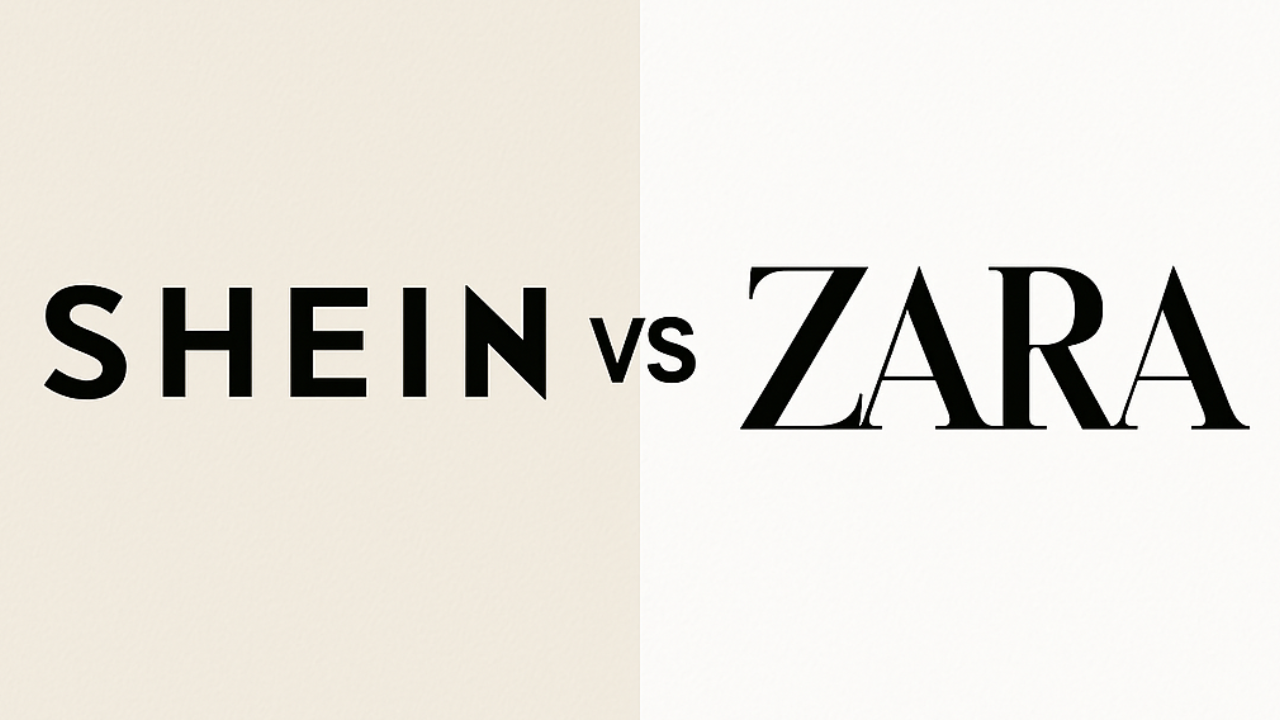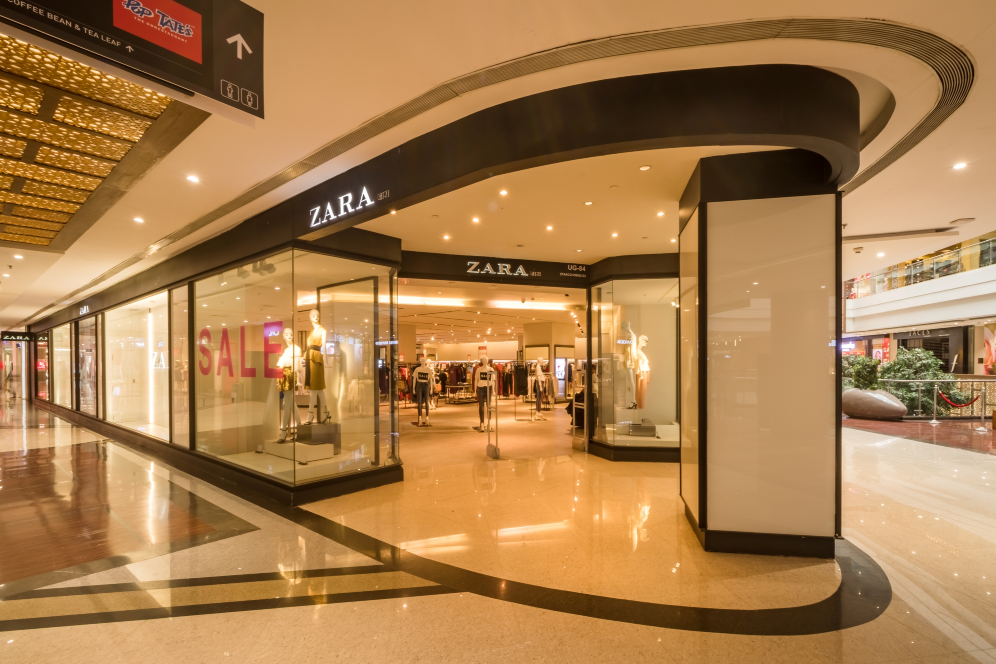
In the world of fast fashion, two giants stand miles apart in strategy yet neck-and-neck in impact, i.e. Shein and Zara. One moves at lightning speed, flooding feeds with micro-trend drops and influencer buzz, while the other crafts an aura of scarcity and premium appeal through meticulously curated collections. It’s a fascinating rivalry that doesn’t just shape our closets but also the way modern brands approach marketing, pricing, and customer experience.
For style lovers, the Shein vs Zara debate is about taste and budget. But for marketers, whether at a branding agency in Ahmedabad or anywhere in the world looking to decode what truly drives global consumer loyalty, it’s a masterclass in how two very different approaches can win big in the same arena. In here, we’ll dive deep into their strategies, compare their strengths and uncover lessons any brand can adapt to thrive in today’s ever-changing fashion marketplace.
Table Of Contents
- How Shein changed the game
- Zara’s timeless strategy
- Price, quality and perception
- Marketing tactics that work
- Social media strategy Showdown
- Which brand leads the future
- Final Thoughts
- Frequently Asked Questions
How Shein Changed the Game
Shein didn’t just enter the fashion market, but rewrote the rules. Leveraging real-time data and AI-powered trend analysis, Shein produces thousands of new designs weekly in micro-batches. This rapid-response model keeps its inventory fresh and aligns perfectly with Gen Z’s craving for constantly updated styles. A key driver of Shein’s explosive growth is its influencer marketing strategy. The viral #SheinHaul trend on TikTok exemplifies powerful peer-to-peer promotion, where customers showcase massive, affordable hauls, fueling millions of views and repeat purchases.
Shein’s gamified shopping experience, with flash sales, countdown timers, and personalised discount codes, transforms shopping into an interactive event that boosts engagement and retention. This approach offers a powerful blueprint for digital content strategists to harness data and social media influencers effectively, especially when targeting India’s digitally savvy youth who value trends and affordability.
Zara’s Timeless Strategy
Zara plays a different, more curated game. Its power lies in creating an aspirational shopping experience that combines premium quality with limited product availability. Zara’s flagship stores in prime locations are designed to attract attention with minimalist window displays and carefully arranged layouts showcasing fresh collections. This creates a subtle sense of urgency: customers feel compelled to buy before the styles disappear.

Behind the scenes, Zara’s agile supply chain can launch new collections twice weekly, blending designer intuition with rapid store feedback. Unlike Shein’s vast inventory, Zara focuses on scarcity and exclusivity, which strengthens brand prestige. For Indian marketers and branding agencies, Zara’s model highlights the effectiveness of combining offline store atmosphere with selective digital marketing to build lasting customer loyalty in aspirational segments.
Price, Quality and Perception
Price plays a vital role in how consumers perceive these brands. Shein’s ultra-low prices (think dresses under £10 or ₹1000) attract price-sensitive shoppers but sometimes raise concerns about quality and durability. Zara, positioned at a mid-tier price point, benefits from a perception of higher quality, supported by better materials and craftsmanship.
Pricing is more than cost, it’s part of brand storytelling. Shein’s affordability signals inclusivity and trendiness, while Zara’s pricing implies exclusivity and style confidence. Indian consumers, especially in tier 2 cities like Ahmedabad, Indore or Jodhpur, increasingly differentiate between “budget fashion” and “invested style,” making these pricing strategies deeply relevant for local fashion brands exploring market segmentation.
Moreover, Shein’s pricing psychology leans heavily on impulse, flash sales, gamified discounts and limited-time codes to keep shoppers coming back. Zara, in contrast, leans into scarcity and subtle prestige: the “this might not be here tomorrow” allure, paired with store aesthetics that make customers feel they’re investing in something more curated. It’s about feeling smart when you purchase, not cheap, but savvy and stylish.
Marketing Tactics That Work
Shein thrives on abundance and urgency. By constantly refreshing its website with thousands of new items and using flash sales and countdown timers, Shein fuels impulse buying and repeat visits. Gamifying the shopping experience keeps users engaged, particularly through mobile apps.
Zara’s tactic is scarcity-driven FOMO. Limited product runs and curated in-store displays encourage thoughtful purchases before items sell out. This creates a premium “experience” that resonates with middle-to-upper-class Indian shoppers who view clothing as an investment in personal style, not just a quick buy.
Both approaches demonstrate powerful but contrasting ways to build consumer anxiety around missing out—valuable lessons for digital marketing agencies strategizing in India’s diverse consumer market.
Social Media Strategy Showdown
Shien on Social Media
Shein dominates Instagram, TikTok, and YouTube with a high-velocity content approach targeting Gen Z and young millennials. Its influencer partnerships, user-generated haul videos, flash sale announcements, and viral challenges create a dynamic content ecosystem that drives e-commerce conversions.
- Platforms and Audience: Active on various platforms, especially instagram and tiktok, targeting primarily Gen Z and young Millennials with highly trend-responsive content.
- Marketing Tactics: Shein aggressively leverages micro-influencers worldwide who post frequent product hauls and style videos, often incentivised through commissions from affiliate programmes. Viral challenges, flash sales and exclusive discount codes stimulate excitement and urgency.
- Content Style: Dynamic, fast-paced and interactive, Shein’s content emphasises user-generated posts and viral moments to drive direct e-commerce conversions.
- Omnichannel Experience: Though mostly an online retailer, Shein operates pop-up stores internationally, designed as Instagrammable events to boost social media buzz and experiential engagement without permanent physical stores.
- Technology Driven: Heavy use of AI and algorithms tailors ads and product recommendations in real time based on customer behaviour, enhancing personalisation and trend forecasting.
Zara on Social Media
Zara takes a more minimalist, editorial stance on social media. It relies on polished visuals, fashion storytelling, and selective influencer partnerships. The focus is on brand narrative and aspiration rather than volume-driven reach. Its online presence is integrated closely with physical retail data to adapt collections regionally.
- Platforms and Audience: Zara maintains a curated presence on Instagram and Facebook, targeting a broader demographic that values style and aspiration.
- Marketing Tactics: Zara’s social media is minimalist and artistic, avoiding overuse of hashtags or direct sales language. The brand promotes new collections, fashion inspirations and styling without excessive influencer reliance.
- Content Style: Polished and editorial, focusing on brand storytelling, craftsmanship and exclusivity with restrained engagement on social platforms.
- Influencer Strategy: Zara works with influencers selectively and strategically, ensuring alignment with its refined brand image rather than volume-driven reach.
- Integration with Physical Retail: Zara leverages data from online engagement combined with direct store feedback to adjust marketing and inventory regionally, maintaining agility through a physical retail feedback loop.
- Visual Focus: Zara uses high-fashion photography and minimalist styling on social platforms to create allure and a premium perception.
For Indian branding agencies, understanding this contrast can inform campaigns tailored for India’s young, digitally native consumers versus aspirational, style-conscious urban shoppers.
Which Brand Leads the Future?
It’s tempting to call this a race, but really, Shein and Zara are running on parallel tracks. Shein might dominate in volume and viral appeal, while Zara continues to hold the premium perception crown.
In the end, it’s the consumer who decides and right now, there’s enough room in the market for both. But as sustainability, regulation and digital innovation reshape fashion, the winner may not be who’s faster but who’s smarter.
Final Thoughts
The Shein vs Zara rivalry is more than a battle for sales; it’s a clash of philosophies. Shein thrives on relentless speed, ultra-low prices and social media buzz, while Zara commands loyalty through curated collections, aspirational branding and physical store presence.
For shoppers, the choice often depends on mood and budget. For brands and marketers, the real value lies in understanding how two companies can dominate the same industry while following entirely different playbooks. In a marketplace this competitive, the only constant is change and both Shein and Zara seem ready for the next chapter.
Ready to scale like Shein and Zara? Partner with our digital marketing agency – contact us today.



